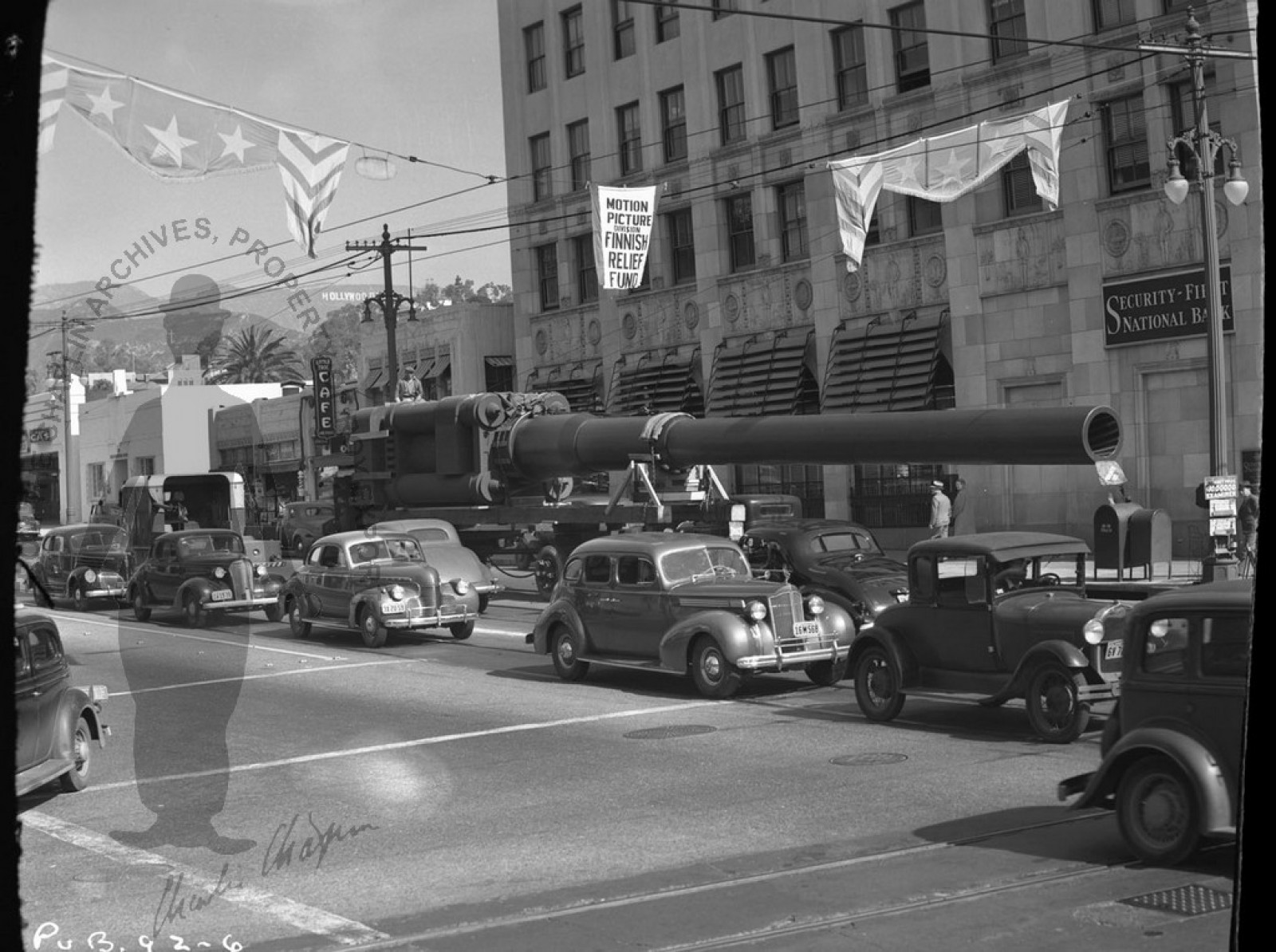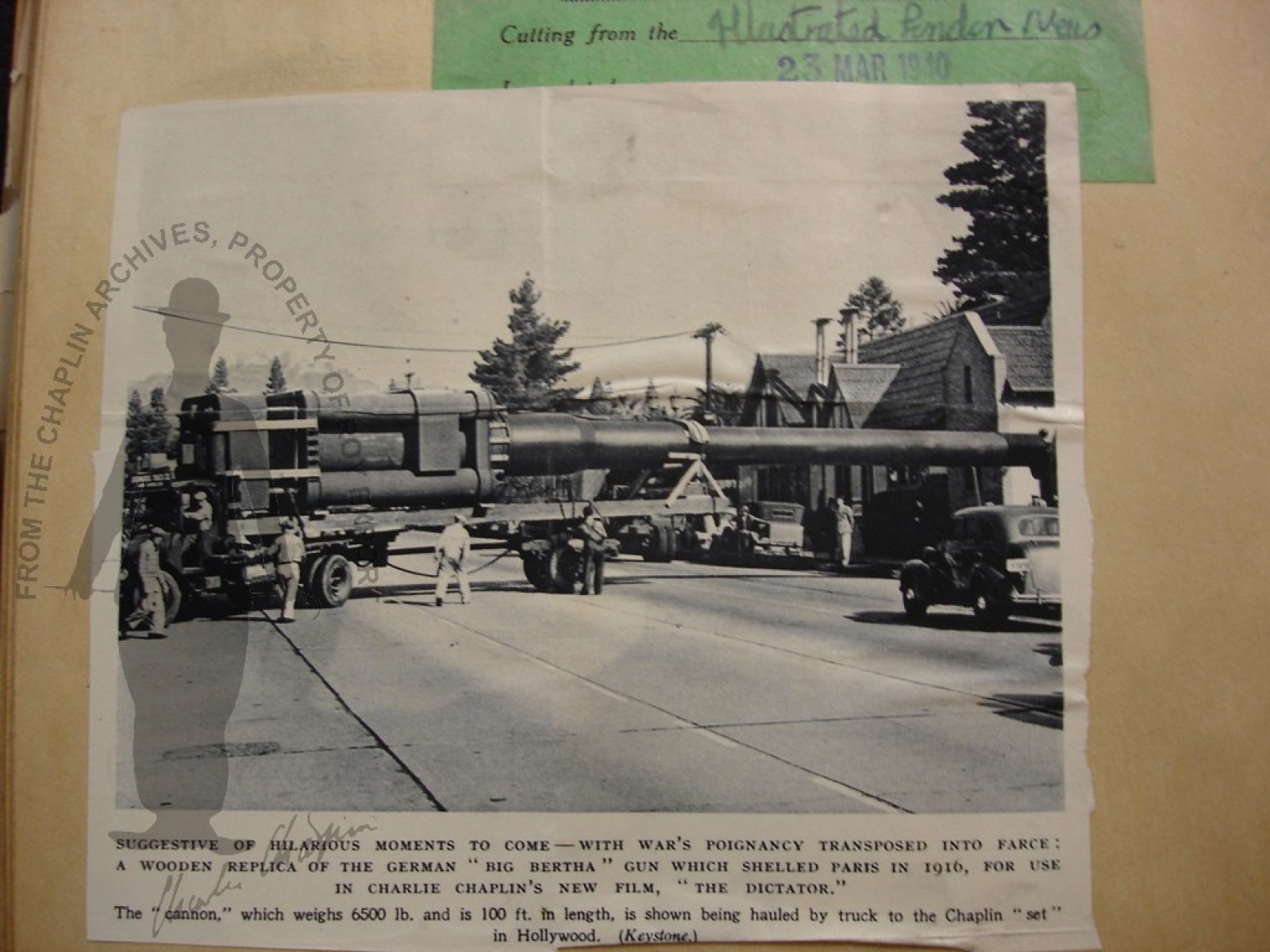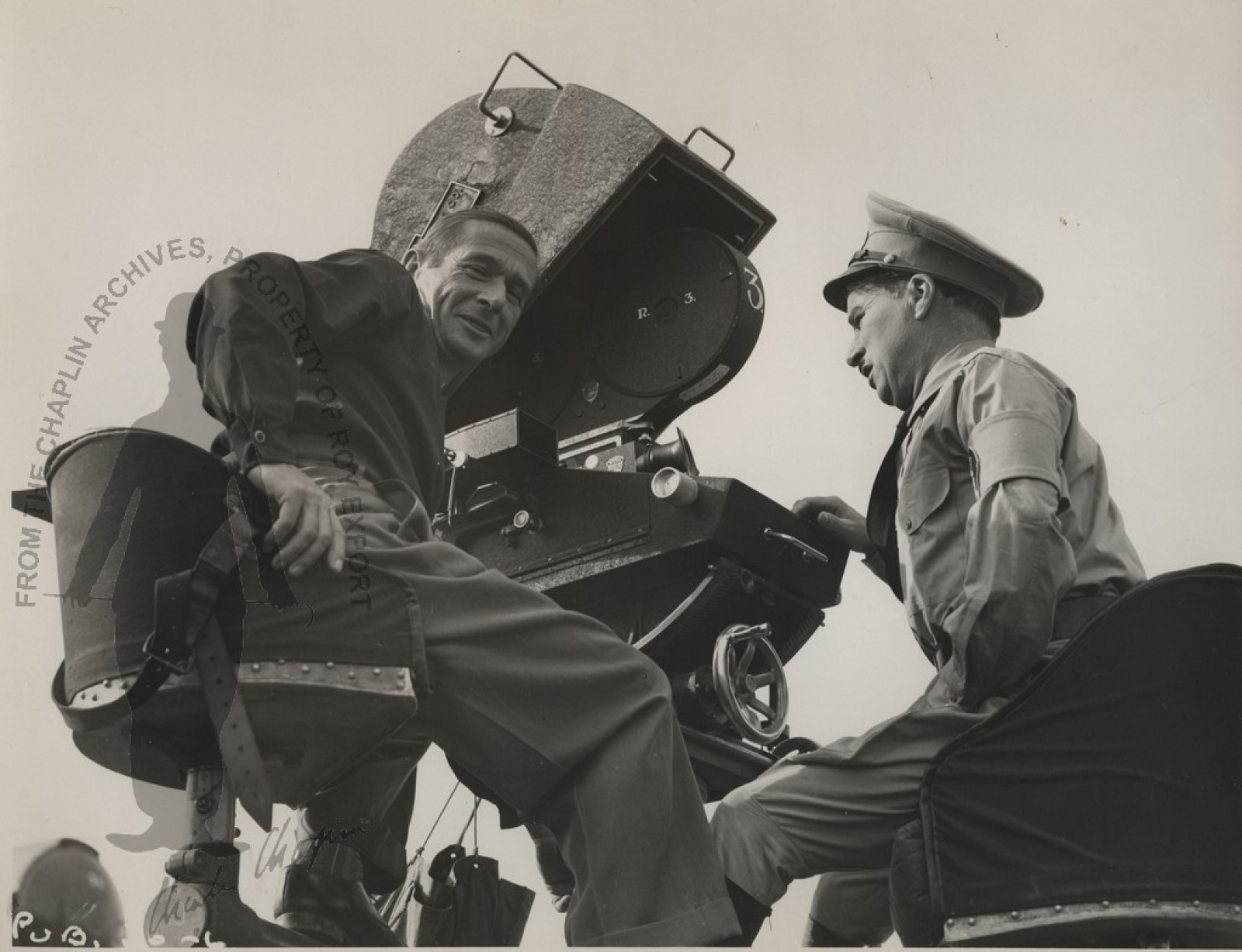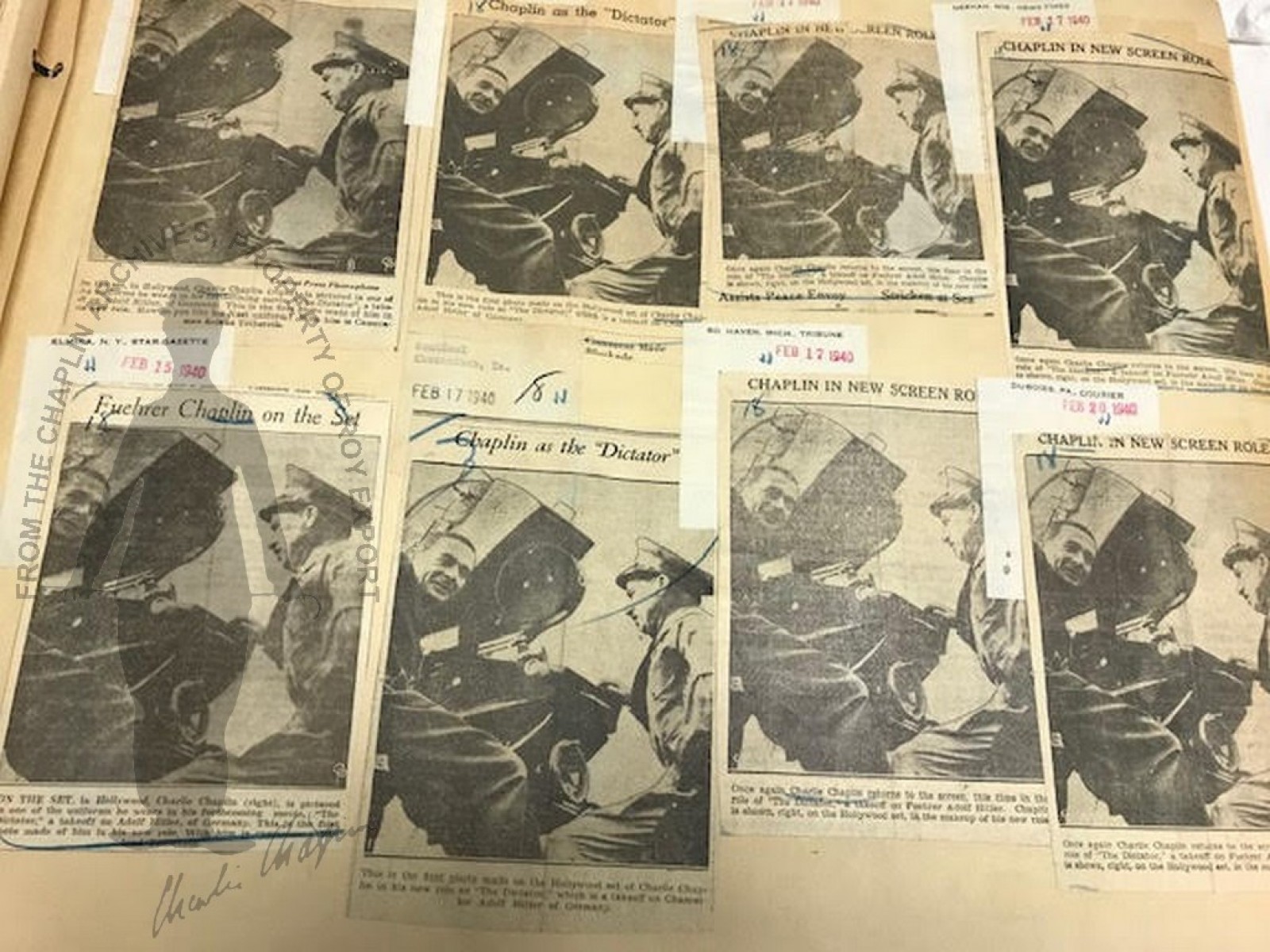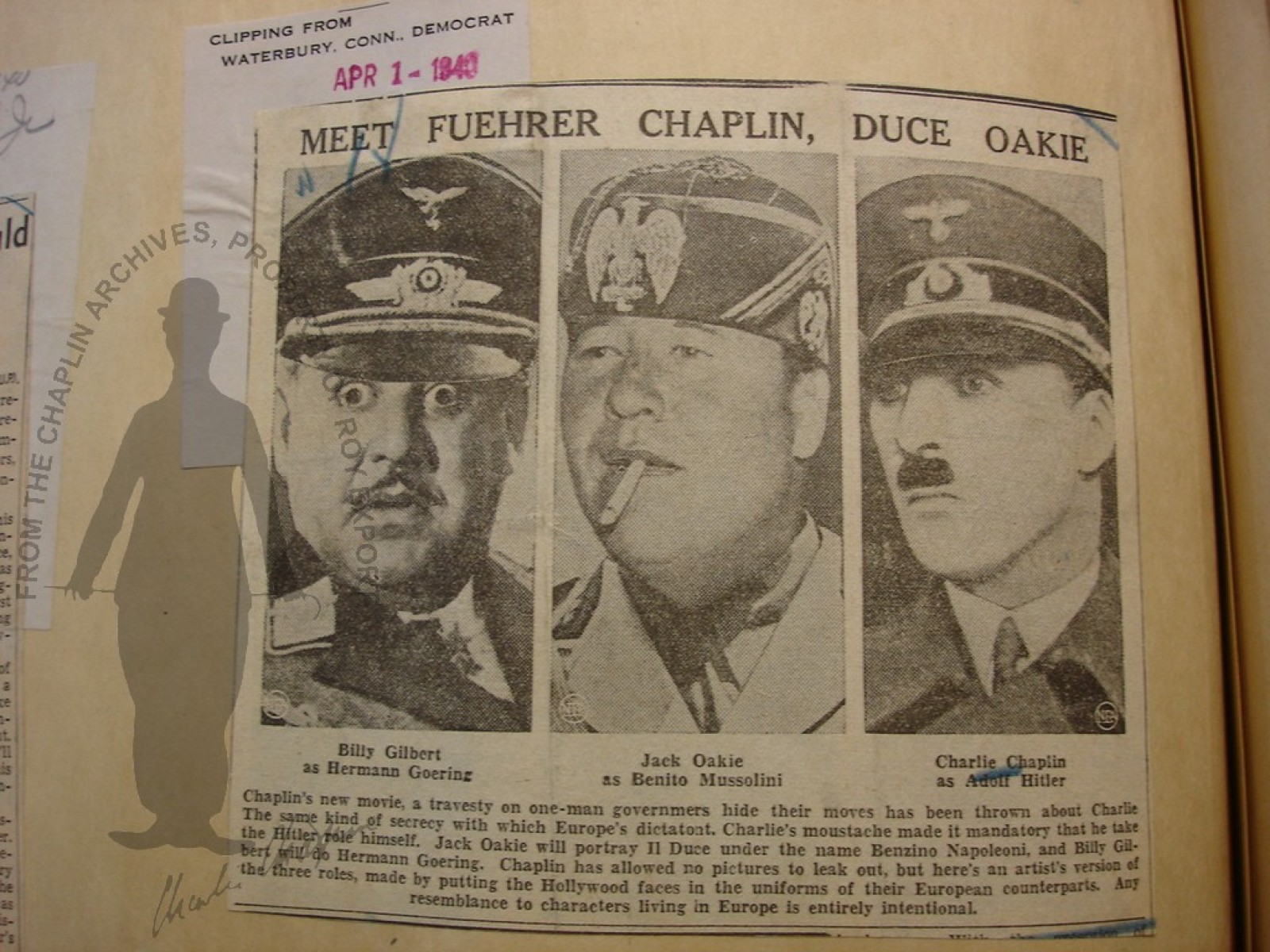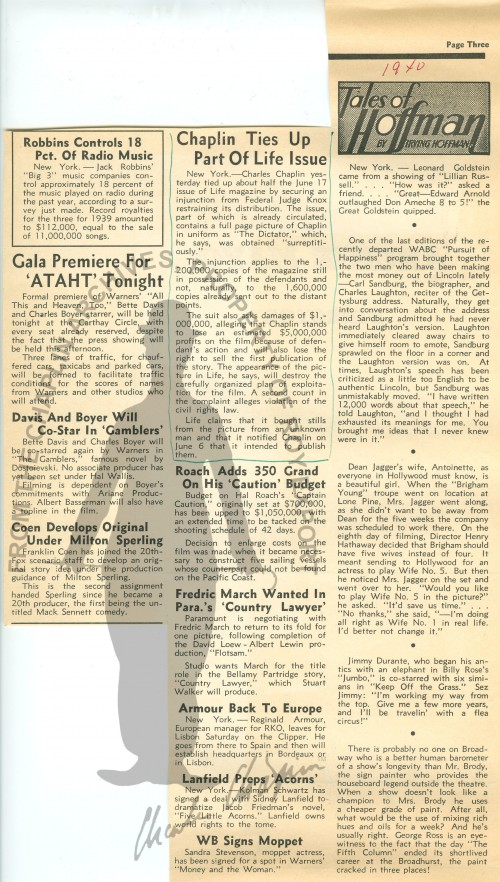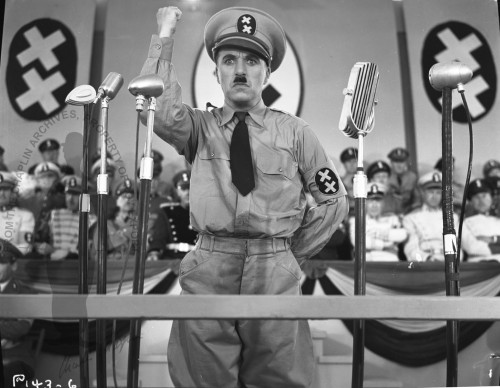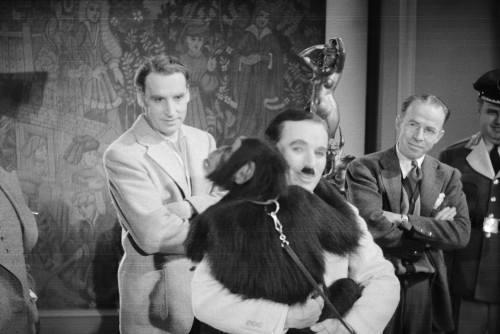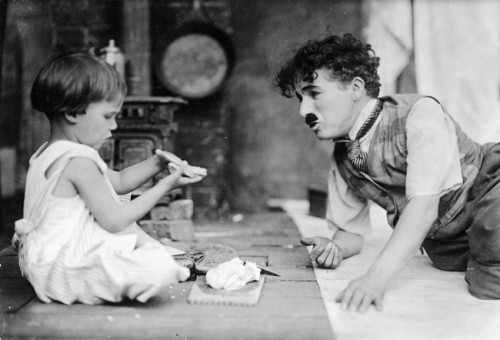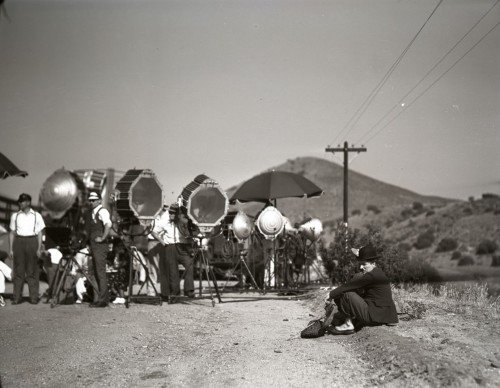Still photographs to Chaplin, and his crew, were publicity vehicles only. Photos were taken almost every day during the production of all his films. Those considered acceptable were numbered and printed. For some productions, handwritten notes on the back of the original stills tell to which press agency particular photographs were assigned, or decree that an image is NG, no good. Many copies of the best images were printed for the press.
There were stills of actual film scenes, and of behind the scenes images, the latter labelled “Pub” for publicity – even though the film scene stills were also for publicity purposes. Chaplin never had photographs taken of the best scenes in his films – the feeding machine scene in Modern Times, the bread rolls dance in The Gold Rush, for example – as he did not want to reveal the best gags of a film before release.
In the case of The Great Dictator there are no official Studio stills of the famous barber shop shaving scene, of the final speech, nor of Hynkel’s sadistic dance with the globe, just a few snaps by Dan James and other studio photographers.
Although the press and the general public were aware of The Great Dictator in preparation, Chaplin was extremely careful to let nothing escape the walls of the Chaplin studios. In February 1940, photographs were taken and issued to the press of the wooden replica of Germany’s Big Bertha cannon (for the 1st World War scenes at the beginning of the film) leaving the Chaplin studios for the location in San Fernando Valley.
A second photograph was issued in of Chaplin in Hynkel uniform, with cameraman Rollie Totheroh far more visible than Chaplin.
Amazingly those were the only two pictures released to the press of the already infamous “Dictator” film, announced by United Artists as early as January 1939. So, unsurprisingly, newspapers resorted to creating their own images, as examples in the Chaplin press clipping archives show – the photograph montages of Hitler and Mussolini, with Chaplin and Jack Oakie’s heads, for example, are strikingly accurate. Photoshop before its time.
LIFE magazine dated June 17th 1940 published the first ever “paparazzi” photograph of Chaplin as Hynkel, and Chaplin immediately took out, and won, a suit for injunction.
